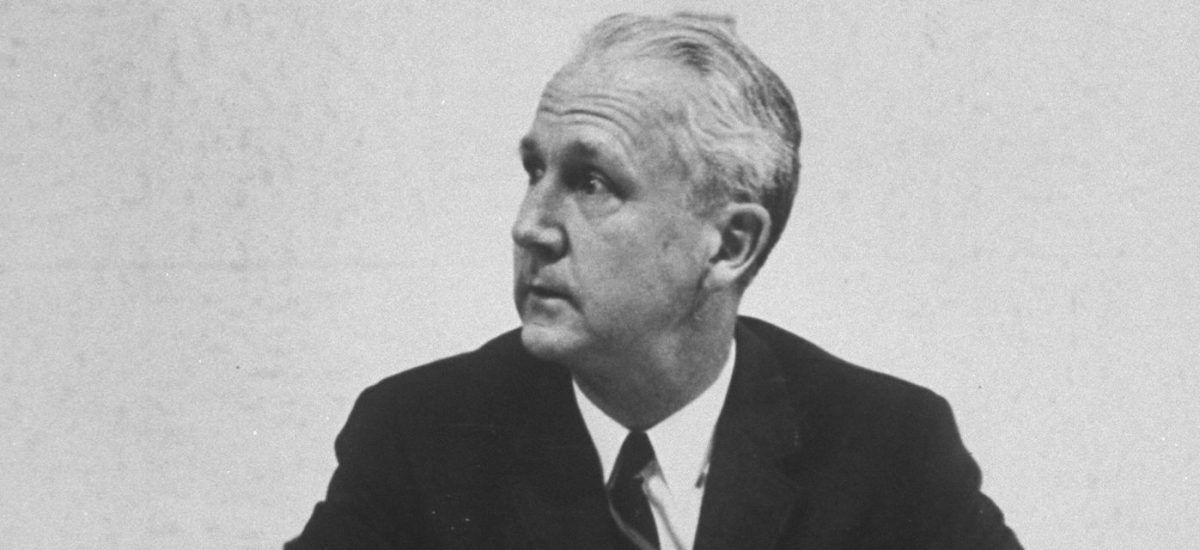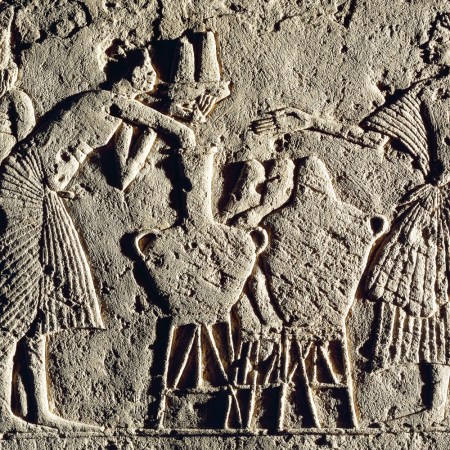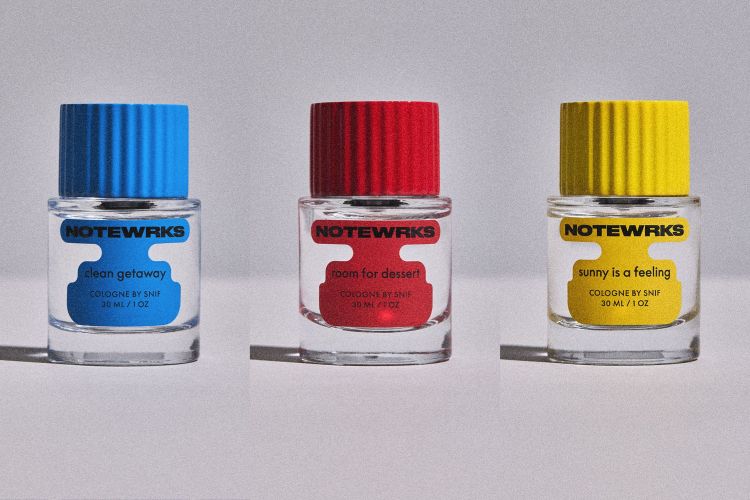The communique came in just before midnight with all the dryness and staccato rhythm of a telegram, but a dramatic scene emerged nonetheless.
“1500 [3 p.m.] Ambassador returning toward Embassy in official limousine, along with driver. Proceeding north along Avenida Reforma, between 12th and 13th streets, Zone 10,” it said. “1502 Green car, possibly 64 Buick, overtook limousine on left, forcing it to curb, grazed left front fender. Small red truck stopped immediately behind limousine, blocking it. Young man, dressed olive-green fatigues, armed submachine gun, emerged from green car, ordered chauffeur and Ambassador step out.”
It was Aug. 28, 1968—50 years ago this week—and the militants’ target was U.S. Ambassador to Guatemala John Gordon Mein. Mein, a 54-year-old career foreign service officer, had served in Guatemala for three years at that point, his first chief of mission post.
The assault, which up to that point had gone according to plan, was likely a kidnapping attempt. Mein was supposed to have been taken so he could be traded for a local guerilla leader.
But Mein didn’t follow orders.
“Driver stepped out of car, but Ambassador opened right rear door and began run back in direction south, protected by car,” the State Department cable continues. “Armed youth ran to left rear fender of car, shouted halt, while driver green car said ‘Shoot him, kill him.’ Youth fired 5-8 shots, Ambassador fell about 12-15 yards behind limousine. Green and red cars fled.”
What the telegram left out, according to the driver’s account later, was that the attackers hadn’t stopped with that first fusillade.
“He was lying on the ground and still moving,” the driver told reporters, “so they shot him some more times with pistols until he died.”
Mein was the first U.S. ambassador to be killed on the job.
His death came eight years into a 36-year civil war in Guatemala that would go on to claim an estimated 200,000 lives — the stage for which had been set in 1954 when the CIA backed a coup that overthrew a democratically elected government that the U.S. saw as a Communist theat.
At the time of Mein’s death, a Reuters report said that the “kidnapping of prominent people has been an element of the terror campaign that has been waged by extremist political elements in this uneasy Central American country…” Two other American officials had been killed earlier in the year.
The morning after the assassination, the incident made it into the President’s Daily Brief as the fifth item, behind developments in Czechoslovakia, South Vietnam, Bulgaria-Romania and Mexico. In the brief, the CIA wrote that Mein’s killers “apparently were members of the pro-[then-Cuban leader Fidel] Castro terrorist organization in Guatemala which has been trying to zero in on him and other U.S. officials for some time.” The Agency said they suspected it was a botched kidnapping, but beyond that they had “no significant leads.”
“The Communists have targeted U.S. personnel because they believe that the U.S. has been responsible for the security forces’ increasing success against them,” another CIA bulletin from Aug. 29, 1968 says. “During the past several months the threats against U.S. personnel and installations have become more strident.” The bulletin noted that months before a “small bomb” had been “hurled” into the compound of the ambassador’s residence.
The same day The New York Times reported that a “major Guatemalan Communist guerilla organization” known as FAR (Rebel Armed Forces) claimed responsibility for the attack and confirmed the CIA’s suspicion that Mein was supposed to be a bargaining chip.
“The statement said that the ‘act of justice’ against the ‘Yankee ambassador’ was only the first in a series of measures to be taken to force the Government to produce [detained guerilla leader] Mr. [Camilo] Sanchez in public,” the Times reported.
Within days of Mein’s death some suspects were arrested, but ultimately the killers were never found and prosecuted.
A State Department cable reported that “hundreds” of Guatemalans paid their respects at the funeral home where Mein’s body was held before it was transferred back to the U.S.
The guerilla war in Guatemala raged on until 1996 when a peace accord was signed that December.
As for U.S. diplomats, Mein’s assassination was the first in a terrifying new phenomenon: Over the next decade four more U.S. ambassadors would be killed by militants in the line of duty, from the Sudan to Cyprus. The last in the string, Adolph Dubs, was killed during a rescue attempt after he’d been kidnapped in Kabul, Afghanistan in 1979.
But after Dubs, according to the State Department’s count, no U.S. ambassadors were killed by militants at their posts for the next three decades – not until September 2012 when U.S. Ambassador to Libya Chris Stevens was killed along with three other Americans in Benghazi.
This article appeared in an InsideHook newsletter. Sign up for free to get more on travel, wellness, style, drinking, and culture.

























